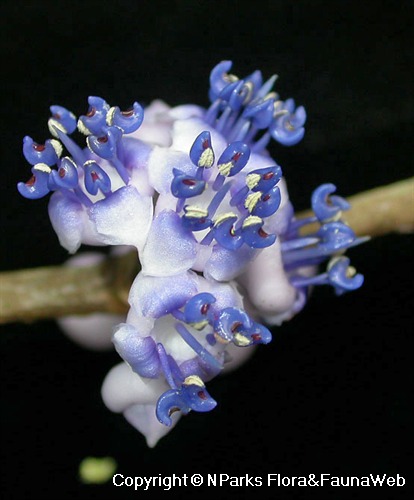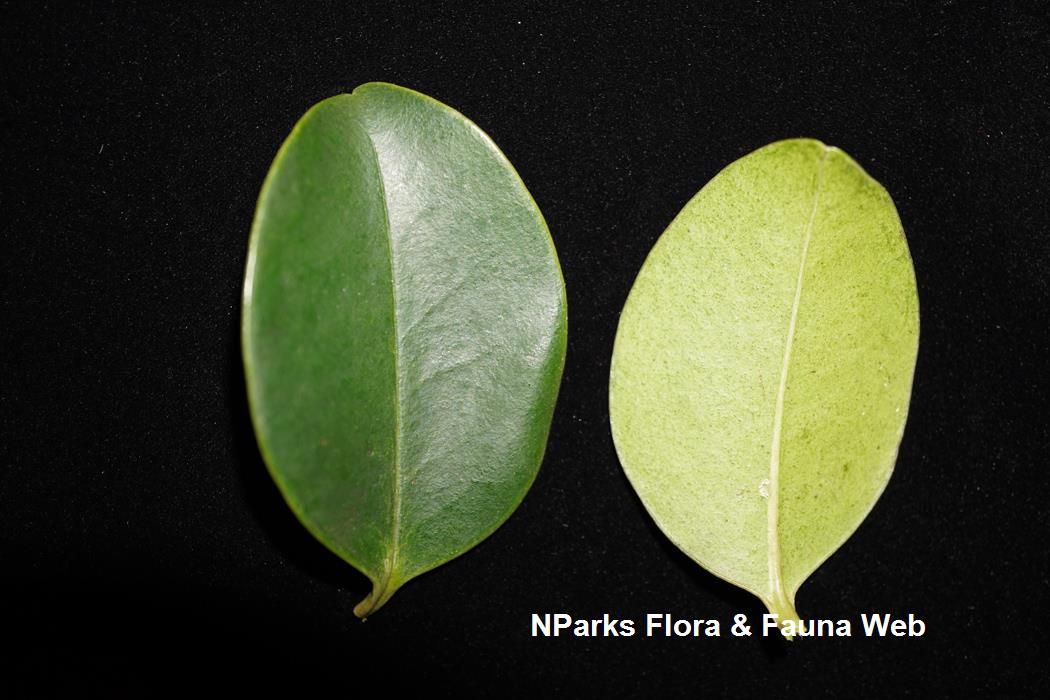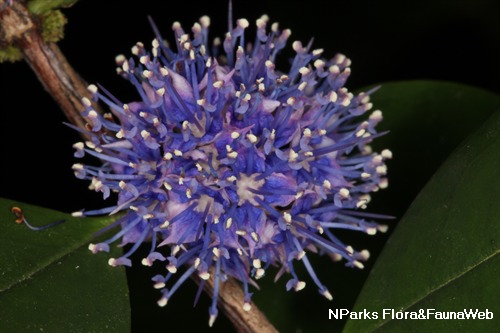
Back
Memecylon pauciflorum Blume
| Family Name: | Melastomataceae |
| Synonyms: | Memecylon pauciflorum var. pisocarpum, Memecylon pulchellum, Memecylon umbellatum, Memecylon capitellatum |
| Common Name: | Cherry Shrub, 少花谷木 |
Name
Classifications and Characteristics
| Plant Division | Angiosperms (Flowering Seed Plants) (Dicotyledon) |
|---|---|
| Plant Growth Form | Shrub |
| Lifespan (in Singapore) | Perennial |
| Mode of Nutrition | Autotrophic |
| Plant Shape | Shrubby, Irregular |
| Maximum Height | 3 m |
Biogeography
| Native Distribution | Myanmar, Laos, Vietnam, Thailand, Peninsular Malaysia and Australia |
|---|---|
| Native Habitat | Terrestrial (Primary Rainforest, Coastal Forest) |
| Preferred Climate Zone | Tropical, Sub-Tropical / Monsoonal |
Description and Ethnobotany
| Growth Form | It is a woody shrub up to 3 m tall, with a slightly weeping habit. |
|---|---|
| Foliage | Leaves are simple, almost sessile (stalkless), arranged oppositely along long twigs, thus resembling a large pinnately-compound leaf. Texture sub-leathery to stiff-papery, with indistinct veins. Young leaves are glossy red. |
| Stems | Twigs and branches are 4-angled. |
| Flowers | Flowers are small but conspicuous, with numerous white-tipped blue stamens and pink-tinged petals resting on top of creamy calyx lobes. They are clustered in axillary cymose inflorescences arising directly from twigs. Unopened flower buds are cream-coloured. Blooming occurs several times per year under local conditions. |
| Fruit | Fruits are fleshy and globose, resembling berries. They have persistent calyx lobes at base. Each fruit is small (6-9mm across), ripening from green to yellow to purplish-black, and containing 1 - 2 seeds within. Seeds are brown, with imprint of 5-rayed fan on one end, dispersed by fruit-eating birds. Flowering-cum-fruiting in wild specimens in Peninsular Malaysian lowland jungle are observed to last for 13 weeks. |
| Habitat | It is found in coastal forests, evergreen forests, and limestone forests up to 600 m altitude. |
| Associated Fauna | It is pollinated by insects. Its fruits are eaten by birds. |
| Cultivation | It prefers full sun to bright shade. Avoid locating plant in deep shade, as this tends to result in sparse leggy growth, and increase the plant's susceptibility to attack by sooty mould. Provide moist but well-drained soils. Propagate by seeds and stem cuttings. |
| Etymology | Genus epithet 'Memecylon' derived from 'memaecylon' -- a name used by ancient Greek philosophers Dioscorides and Pliny to describe the red fruits of Arbutus unedo (Oriental Strawberry Tree) -- and used in allusion to the colour of the berries produced by members of this genus. Species epithet 'pauciflorum' means 'few flowers' -- an incongruous description since this species is able to exhibit profuse blooming. |
| Ethnobotanical Uses | Others: Timber: Provides good-quality charcoal and fuelwood. Heavy hardwood used as poles, beams and rafters in house construction and temporary structures, also used to make boats, paddles, furniture, household utensils, tool handles and walking sticks. Timber is of good-quality, but economic utilization restricted by the plants' often poor form and relative scarcity. |
Landscaping Features
| Landscaping | It is suitable as a shrub in parks, gardens and streetscapes for its brilliant blue flowers. |
|---|---|
| Desirable Plant Features | Ornamental Flowers |
| Landscape Uses | General, Hedge / Screening, Suitable for Roadsides, Parks & Gardens, Small Gardens, Coastal |
Fauna, Pollination and Dispersal
| Fauna Pollination Dispersal Associated Fauna | Bird-Attracting (Fruits) |
|---|---|
| Pollination Method(s) | Biotic (Fauna) |
| Seed or Spore Dispersal | Biotic (Fauna) |
Plant Care and Propagation
| Light Preference | Full Sun, Semi-Shade |
|---|---|
| Water Preference | Moderate Water |
| Plant Growth Rate | Slow |
| Rootzone Tolerance | Fertile Loamy Soils, Well-Drained Soils, Saline Soils / Salt Spray |
| Maintenance Requirements | Moderate |
| Propagation Method | Seed, Stem Cutting |
Foliar
| Foliage Retention | Evergreen |
|---|---|
| Mature Foliage Colour(s) | Green |
| Mature Foliage Texture(s) | Smooth, Glossy / Shiny, Papery, Leathery |
| Prominent Young Flush Colour(s) | Red |
| Young Flush Texture(s) | Leathery |
| Foliar Type | Simple / Unifoliate |
| Foliar Arrangement Along Stem | Opposite |
| Foliar Attachment to Stem | Petiolate |
| Foliar Shape(s) | Non-Palm Foliage (Elliptical, Oblong) |
| Foliar Venation | Pinnate / Net |
| Foliar Margin | Entire |
| Foliar Apex - Tip | Acute, Obtuse |
| Foliar Base | Cuneate |
| Typical Foliar Area | Notophyll ( 20.25cm2 - 45 cm2 ) |
Non - Foliar and Storage
| Stem Type & Modification | Woody |
|---|---|
| Root Type | Underground (Tap Root, Fibrous Root) |
Floral (Angiosperm)
| Flower & Plant Sexuality | Bisexual Flowers |
| Flower Colour(s) | Blue |
|---|---|
| Flower Grouping | Cluster / Inflorescence |
| Flower Location | Axillary |
| Flower Symmetry | Radial |
| Inflorescence Type | Umbel |
| Flowering Habit | Polycarpic |
| Flowering Period Remarks | Several times per year |
Fruit, Seed and Spore
| Mature Fruit Colour(s) | Black, Purple |
|---|---|
| Fruit Classification | Simple Fruit |
| Fruit Type | Fleshy Fruit , Berry |
Image Repository
Others
| Master ID | 29089 |
|---|---|
| Species ID | 3402 |
| Flora Disclaimer | The information in this website has been compiled from reliable sources, such as reference works on medicinal plants. It is not a substitute for medical advice or treatment and NParks does not purport to provide any medical advice. Readers should always consult his/her physician before using or consuming a plant for medicinal purposes. |

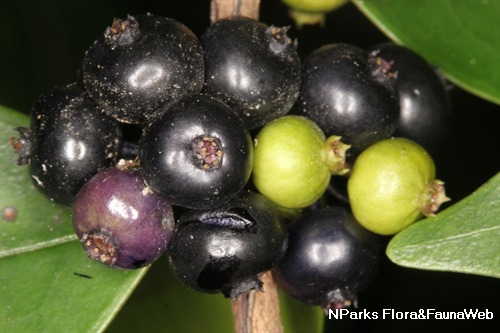
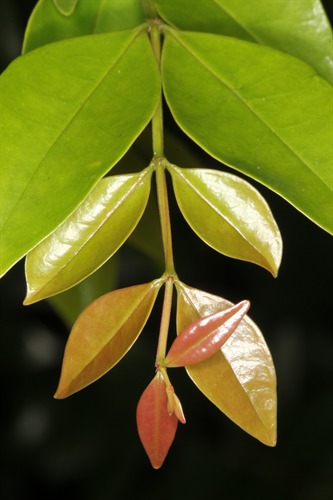
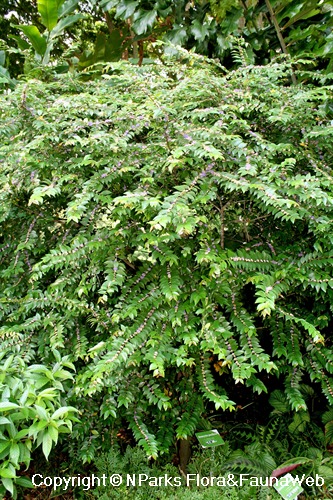
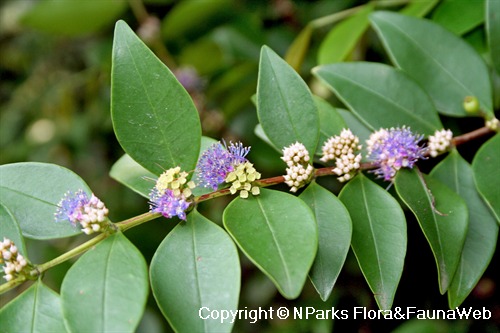
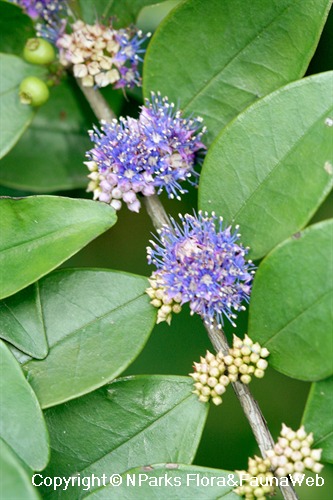
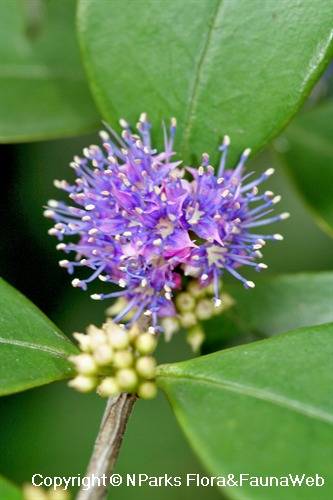
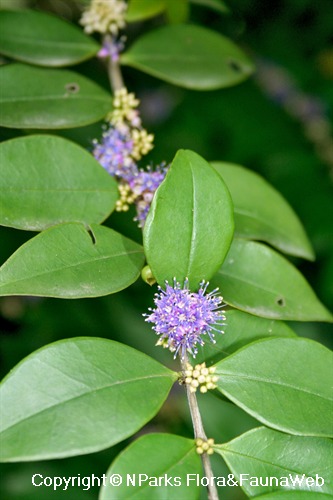
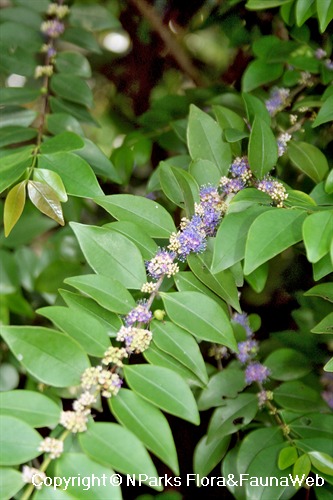
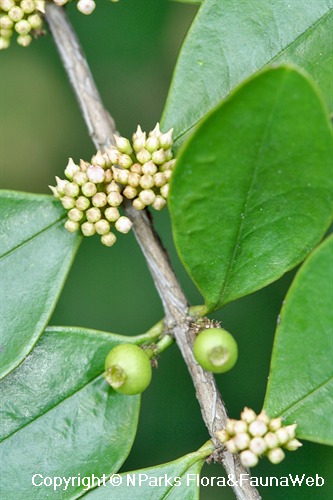
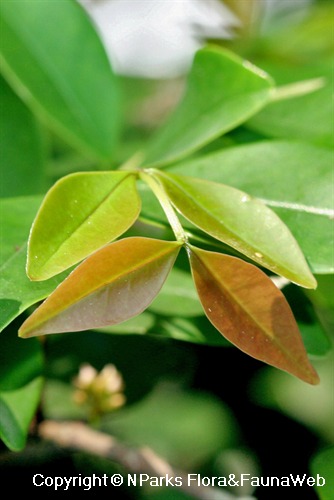
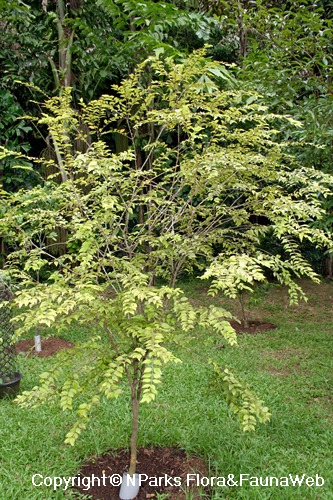
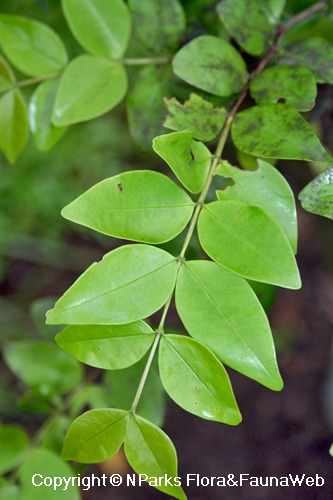
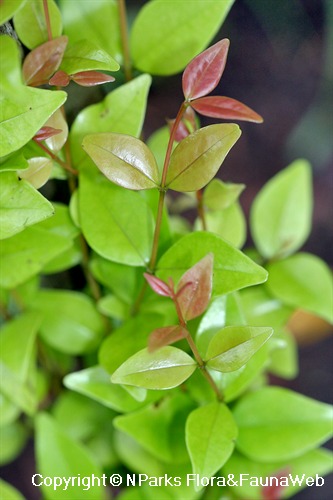
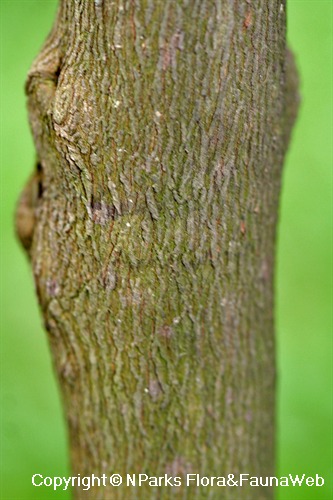
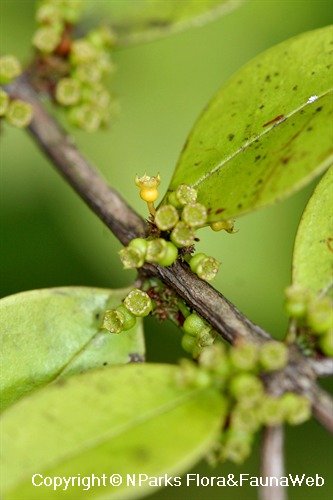
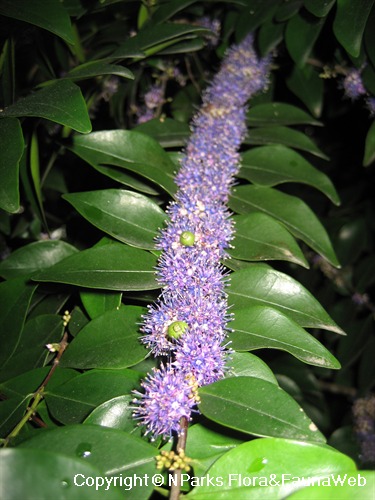
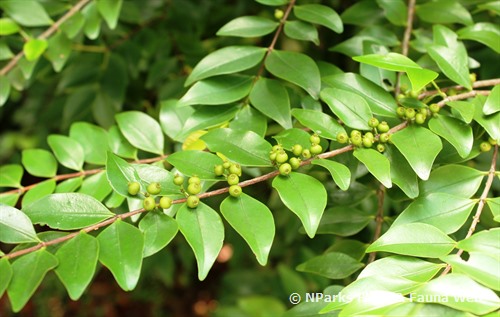
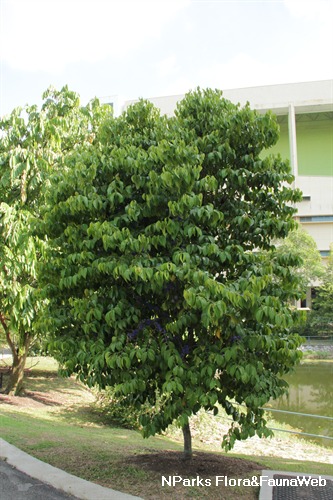
.jpg)
